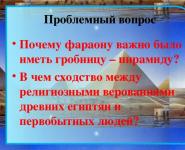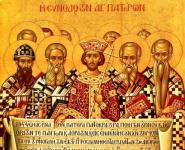Real city spain. Find a train from Ciudad Real to Madrid
Ciudad Real means "Royal City" in Spanish. It is the generally recognized historical capital of the autonomous community of Castilla-La Mancha, is part of the Campo de Calatrava region and is the center of the province of Ciudad Real. The city is located at a distance of 180 km from the capital of Spain, Madrid. There is an airport and a railway line. All this, together with an impressive historical heritage, contributes to the dynamic development of the city.
History of Ciudad Real
The foundation of the city dates back to the 13th century and is associated with a military confrontation between the Catholic kings and the Cistercian order of Calatrava from Castile. The city was built as a fortification system, whose walls were about 4 km long and had 130 towers. Thanks to strong walls, the population living in the city was reliably protected from encroachments from outside. In 1691, Ciudad Real becomes the capital of the province of La Mancha, which contributes to the serious development of the city, the construction of buildings of magnificent architecture is underway. In 1755, a powerful earthquake severely destroyed many buildings. And during the period of the Napoleonic warriors, the city was devastated. In the 20th century, during the Civil War, the city was a powerful center of resistance to the Franco regime and surrendered only two days before the end of the war.
City of Ciudad Real on the world map
Sights in Ciudad Real
Cidad Real is famous for its historical sights, and in its vicinity there are famous national parks and many cities of great historical value. The city itself has the following historical and cultural monuments that deserve the attention of tourists:
- Cathedral Santa Maria del Prado (XIII-XIX centuries), built in the Gothic style with the addition of Baroque and Renaissance styles during the restoration;
- The Gothic church of San Pedro, built in the 14th century, looks more like a fortress than a temple;
- Puerta de Toledo, the only surviving part of a powerful fortress wall, laid at the foundation of the city;
- The main city square, Plassa Mayor, is located in the center of the old city;
- Alarcos Hill, located near the city, where in 1195 the Costilians were defeated by the Moors;
- Archaeological Museum;
- Museum of Don Quixote;
- The Cabarnero National Park is rightfully considered one of the best natural reserves in Spain;
- Spain's smallest National Park, Tablas de Daimiel, is a special area for some unique bird species.
Population and notable natives
Cidad Real is a small city with a population of about 75,000 people. There has been a positive trend in population growth over the past decades. Among the famous personalities born in the city are:
- Cristobal de Mena - a participant in the conquest of the Inca Empire in the 16th century, who compiled and described everything he saw in a report published in 1534;
- Antonio Ciudad Real (1551 - 1617) - philologist and missionary who served on the Yucatan Peninsula, author of a multi-volume dictionary dedicated to the Mayan language.
Climate and ecology
On the territory of Ciuad Real, a continental Mediterranean climate dominates, with significant temperature differences between summer and winter. The landscape is mostly flat. In the national parks near the city, there are such unique birds as Iberian eagles and black vultures.
 Currently, Ciuad Real is an actively developing tourist city, rich in ancient monuments of culture and history and surrounded by picturesque national parks. Also, travelers are attracted to visit these picturesque places, the desire to follow the paths of the book hero Don Quixote, traveling through the province of La Mancha, who came out from under the pen of Cervantes.
Currently, Ciuad Real is an actively developing tourist city, rich in ancient monuments of culture and history and surrounded by picturesque national parks. Also, travelers are attracted to visit these picturesque places, the desire to follow the paths of the book hero Don Quixote, traveling through the province of La Mancha, who came out from under the pen of Cervantes.
Virail has the magic trick to find cheap train tickets to Madrid. You just need to enter the dates and set the filters for departures and prices according to your preferences. Once you have chosen the best travel options for your train from Ciudad Real to Madrid, virail will redirect you automatically to the supplier's website for the purchase.
Which companies take you from Ciudad Real to Madrid by train?
To get to Madrid by train, you can count on Renfe and Renfe AVE, just an example, among all our partners.
Renfe is a national Spanish company that offers a very well developed high speed network served by Ave trains. It also covers regional short distance routes, via Feve trains and long distance international routes, for instance with the night train Elipsos.
What is the price of train tickets from Ciudad Real to Madrid?
Booking in advance really allows you to save money:. In fact, you can get cheap train tickets from Ciudad Real to Madrid also for only PFL, while the average price is 41,63 RUB
The sun is the source of life on the planet. Its rays give the necessary light and warmth. At the same time, ultraviolet radiation from the Sun is detrimental to all living things. To find a compromise between the beneficial and harmful properties of the Sun, meteorologists calculate the ultraviolet radiation index, which characterizes the degree of its danger.
What UV radiation from the sun is
The ultraviolet radiation of the Sun has a wide range and is divided into three regions, two of which reach the Earth.
-
UV-A. Longwave radiation range
315–400 nmThe rays pass almost freely through all atmospheric "barriers" and reach the Earth.
-
UVB. Medium wave radiation range
280–315 nmThe rays are 90% absorbed by the ozone layer, carbon dioxide and water vapor.
-
UVC. Shortwave radiation range
100–280 nmThe most dangerous area. They are completely absorbed by stratospheric ozone without reaching the Earth.
The more ozone, clouds and aerosols in the atmosphere, the less the harmful effect of the sun. However, these saving factors have a high natural variability. The annual maximum of stratospheric ozone occurs in spring, and the minimum - in autumn. Cloud cover is one of the most variable weather characteristics. The content of carbon dioxide also changes all the time.
At what values of the UV index is there a danger
The UV index gives an estimate of the amount of UV radiation from the Sun on the Earth's surface. UV index values range from safe 0 to extreme 11+.
- 0–2 Low
- 3–5 Moderate
- 6–7 High
- 8–10 Very high
- 11+ Extreme
In mid-latitudes, the UV index approaches unsafe values (6–7) only at the maximum height of the Sun above the horizon (occurs in late June - early July). At the equator, during the year, the UV index reaches 9...11+ points.
What is the benefit of the sun
In small doses, UV radiation from the Sun is essential. The sun's rays synthesize melanin, serotonin, vitamin D, necessary for our health, and prevent rickets.
Melanin creates a kind of protective barrier for skin cells from the harmful effects of the sun. Because of it, our skin darkens and becomes more elastic.
Happiness hormone serotonin affects our well-being: it improves mood and increases overall vitality.
Vitamin D strengthens the immune system, stabilizes blood pressure and performs anti-rickets functions.
Why is the sun dangerous?
When sunbathing, it is important to understand that the line between beneficial and harmful Sun is very thin. Excessive sunburn always borders on a burn. UV radiation damages DNA in skin cells.
The body's defense system cannot cope with such an aggressive impact. This lowers the immune system, damages the retina, causes skin aging and can lead to cancer.
Ultraviolet destroys the DNA strand
How does the sun affect people?
Susceptibility to UV radiation depends on skin type. The most sensitive to the Sun are people of the European race - for them, protection is required already at an index of 3, and 6 is considered dangerous.
At the same time, for Indonesians and African Americans, this threshold is 6 and 8, respectively.
Who is affected the most by the Sun?
people with light
skin tone
People with many moles
Residents of the middle latitudes while relaxing in the south
winter lovers
fishing
Skiers and climbers
People with a family history of skin cancer
In what weather is the sun most dangerous
The fact that the Sun is dangerous only in hot and clear weather is a common misconception. You can also get burned in cool cloudy weather.
Cloudiness, no matter how dense it may be, does not at all reduce the amount of ultraviolet to zero. In mid-latitudes, cloudiness significantly reduces the risk of sunburn, which cannot be said about traditional places beach holiday. For example, in the tropics, if in sunny weather you can get burned in 30 minutes, then in cloudy weather - in a couple of hours.
How to protect yourself from the sun
To protect against harmful rays, observe simple rules:
Get less exposure to the Sun during the midday hours
Wear light-colored clothing, including wide-brimmed hats
Use protective creams
Wear sunglasses
Stay in the shade more on the beach
Which sunscreen to choose
Sunscreen varies in terms of sun protection and is labeled from 2 to 50+. The numbers indicate the proportion of solar radiation that overcomes the protection of the cream and reaches the skin.
For example, when applying a cream labeled 15, only 1/15 (or 7%) of the UV rays will penetrate the protective film. In the case of cream 50, only 1/50, or 2%, affects the skin.
Sunscreen creates a reflective layer on the body. However, it is important to understand that no cream is capable of reflecting 100% of ultraviolet light.
For everyday use, when the time spent under the Sun does not exceed half an hour, a cream with protection 15 is quite suitable. For tanning on the beach, it is better to take 30 and above. However, for fair-skinned people, it is recommended to use a cream labeled 50+.
How to apply sunscreen
The cream should be applied evenly to all exposed skin, including the face, ears and neck. If you plan to sunbathe for a long time, then the cream should be applied twice: 30 minutes before going out and, additionally, before going to the beach.
Please refer to the cream instructions for how much to apply.
How to apply sunscreen while swimming
Sunscreen should be applied every time after bathing. Water washes away the protective film and, reflecting the sun's rays, increases the dose of ultraviolet radiation received. Thus, when bathing, the risk of burning increases. However, due to the cooling effect, you may not feel the burn.
Excessive sweating and rubbing with a towel is also a reason to re-protect the skin.
It should be remembered that on the beach, even under an umbrella, the shade does not provide full protection. Sand, water, and even grass reflect up to 20% of UV rays, increasing their impact on the skin.
How to protect your eyes
Sunlight reflecting off water, snow, or sand can cause painful retinal burns. Use sunglasses with an ultraviolet filter to protect your eyes.
Danger for skiers and climbers
In the mountains, the atmospheric "filter" is thinner. For every 100 meters of altitude, the UV index increases by 5%.
Snow reflects up to 85% of UV rays. In addition, up to 80% of the ultraviolet reflected by the snow cover is again reflected by the clouds.
Thus, in the mountains, the Sun is most dangerous. Protecting the face, lower part of the chin and ears is necessary even in cloudy weather.
How to deal with sunburn if you are burned
Treat the body with a damp sponge to wet the burn
Lubricate the burnt areas with anti-burn cream
If the temperature rises, consult a doctor, you may be advised to take an antipyretic
If the burn is severe (skin is very swollen and blisters), seek medical attention.
The historic center of Ciudad Real is a small area, shaped like an egg, with an area of about 1.5 square meters. km, in the past surrounded by a city wall. Now, on the site of the fortress wall, there is a boulevard ring; among the surviving elements, it is worth noting the gates of Toledo, built on the northern tip of the historical center.
Distances within the historic center are short, and all the most important sights of Ciudad Real are within walking distance of each other. The main city square Plaza Mayor is located almost in the very center of the "egg", it is from it that the most important highways of the old city depart - Calle de Toledo, Calle de Mata, Calle de Postas, Calle de Calatrava and Calle de la Ciruela.
The most important religious landmark of Ciudad Real, the Cathedral, is located 300 meters northwest of Plaza Mayor, other interesting Gothic churches of the city are also nearby: the Church of St. Peter, 200 meters southeast of Plaza Mayor, and the Church of St. James - 700 m to the northeast.
The Ciudad Real railway station is located outside the historic centre, about 1.7 km east of Plaza Mayor.
Spain Ciudad Real attractions
| Archaeological Museum Archaeological Park of Alarcos-Calatrava Gate of Toledo main square Palace of Deputies Casino Cathedral Royal House of Mercy Castles of Ciudad Real Monastery of Barefoot Carmelites |
Ciudad Real- a small (about 60 thousand inhabitants) and not so old city, 200 km. south of Madrid. The name "Royal City" and, in fact, the status of the city, he received in 1420, as a reward for supporting King Juan II in the dynastic strife. Before that, the settlement was called Villa Real.
Now it is a typical Castilian town, with some typical Castilian sights.
Church of St. Petra was founded by three local knights. This is a fairly large building, being built just at the time when the newly acquired city status was attracting new residents. However, the same can be said about all the other religious buildings of the city. The top of the clock tower appeared only in the 18th century.
Church of St. Petra
Iglesia de San Pedro (XIV-XV centuries)
I wrote about conceptionists in an article about Mérida. In Ciudad Real there is also a monastery of this not very well-known order. The Spanish name "Convent of the Franciscan Conceptionists" recalls the times when the Conceptionists were, as it were, under the auspices of the Franciscan order. Now this is not so.
Monastery of the Conceptists
Convento de las Concepcionistas Franciscanas (XVI century)
It is assumed that the tower of the church of St. Jacob was at first a separate defensive structure, and then it was used as a church bell tower. In principle, it is very similar - small windows, more like loopholes, appear only at the very top of the tower. However, the whole church, judging by its appearance, could well be used for defense.
Church of St. Jacob
Church of St. Jacob
Iglesia de Santiago Apostol (XIII-XIV c.)
The Chapel of the Defenders received such an unusual name because it was first at the prison, and then was part of the city hospital. All this, however, concerns the previous church, the current one was built later.
Chapel of the Defenders
Ermita de los Remedios (XVII century)
The Church of Mercy belonged to the monastery of the Barefoot Mercendaries. Strictly speaking, the buildings located on both sides of it are buildings former monastery. Barefoot monks were called, who took a vow to walk only barefoot.
Mercy ChurchIglesia de la Merced (XVII century)
From another city monastery, destroyed in the 60s of the XX century. for the construction of an apartment building, only the portal remained. Moreover, later studies revealed that in fact these are the old city gates of St. Mary, which was used as a portal during the construction of the church.
Portal of the Dominican convent
Portada del Convento de Madres Dominicas (XVI century)
The Cathedral of Our Lady of Ciudad Real has nothing to do with the famous Madrid museum or clothing brand. :) Prado is translated as a meadow, or rather a pasture. So, probably, the name should be understood as the Church of Our Lady of the Shepherds.
Cathedral of Our Lady of the PradoCatedral de las Ordenes Militares de Santa María Del Prado (XIII-XIV c.)
Near the cathedral, a residential building of the 15th century has been preserved, which belonged to the local military leader Hernan Perez del Pulgar, who distinguished himself during the capture of Granada by Christian troops.
House of Hernan Perez del Pulgar
Casa de Hernan Perez del Pulgar (XV century)


